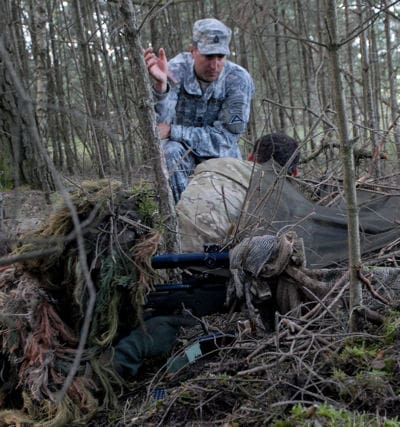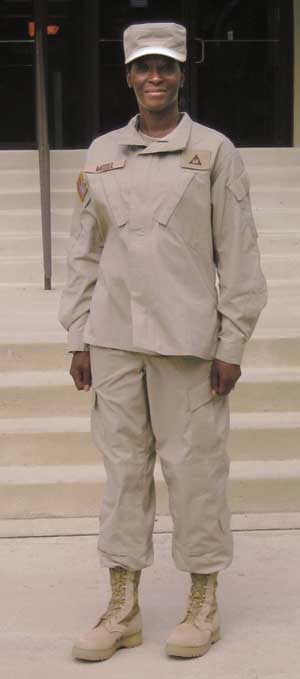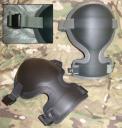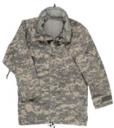Ever since Congress told the Army that the Universal Camouflage Pattern (UCP) used on the Army Combat Uniform (ACU) wasn’t cutting it in Afghanistan, rumors and just plain old bad info has been swirling about the internet so I thought I’d share a few thoughts on the subject.
Urban Legend 1 -Multicam Uber Alles. Despite internet hype and the military version of an urban legend, Multicam is not replacing UCP in 2011 or 2012. As best I can tell this rumor came about because the Future Force Warrior program was supposed to be fielded in, you guessed it, 2011. It so happens that all of the photos of guys suited up in the FFW garb were swathed in Multicam goodness. For some odd reason, folks couldn’t divorce the concept of FFW from Multicam. Hence the urban legend. Naturally, this new round of Congressionally driven controversy has only fanned the flames of this untruth. Think about it. The Army just spent a gazillion dollars changing everything to UCP. In fact, fielding isn’t even complete. So ask yourself this question. Why would the Army spend a “gazillion” dollars on a new camo pattern and turn right around a field a new one mid-stream? The answer? It wouldn’t. They want to buy FCS not new uniforms.
Urban Legend 2 – UCP is going away completely. It isn’t. The Congressional “suggestion” is only for forces in Afghanistan not the whole shebang.
Urban Legend 3 – The Marine Corps offered MARPAT to the Army and they turned it down. Total Fantasy. Here is a truth. These patterns are about branding. When you see MARPAT, you think “Marine”. When you see UCP you think “Soldier”. MARPAT was developed for the Marine Corps. General Jones, former Commandant of the Marine Corps wanted a uniform that would let his enemies know when Marines were in town. He got one.
Urban Legend 4 – The Army didn’t adopt Multicam because they would have to pay a license for Multicam / it was too expensive. Once again; False. The Army helped pay for the development of Multicam. There is no “license”. Also, the more Multicam printed, the cheaper it gets. The more you buy, the less you pay.
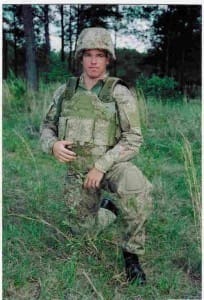
I feel for the Army. What a big poop sandwich. “Hey Army, UCP stinks, issue something else. But use the money we already gave you for OTHER stuff.” You can’t just change out uniforms. You have to replace all of the Soldier’s other kit as well or the contrast will just highlight the guy. So the Army is going to have to compute this huge cost for one theater. That was the point of UCP in the first place. One camo…universal. No more issuing two different patterns to guys…economize.
I feel even worse for the poor action officer at PEO-Soldier who has to develop the decision brief on this one. For example:
COA 1 – Do nothing…Tell Congress “Nuts”, I mean after all, UCP does work in some parts of Afghanistan.
COA 2 – Do Nothing…Beg Congress for cash
COA 3 – Stall…conduct study (Attn PEO-Soldier, I am available for contract to conduct said study)
COA 4 – Issue Woodland or Three-Color Desert
COA 5 – Adopt all new pattern – See pic above
Option 5? That is the fantasy option. Or is it? There are select US forces rocking Multicam all over the place. Oddly enough, so are Snipers. Aside from that, the Army spent a great deal of time and effort developing and testing several patterns any of which could be dusted off including the one in the photo.
However, I am voting for some combo of one or more of the first three with COA 4 as the ultimate outcome. There is already precedence with the Army’s G1 permitting USASOC forces to wear Woodland camo. Plus, there are stock of the older patterns that can be drawn from to get this thing rolling.
Do we love Multicam at Soldier Systems Daily? You’re damned right we do. Will it be adopted for use in Afghanistan? Who knows at this point, but it sure will be interesting watching whatever ultimately happens.


